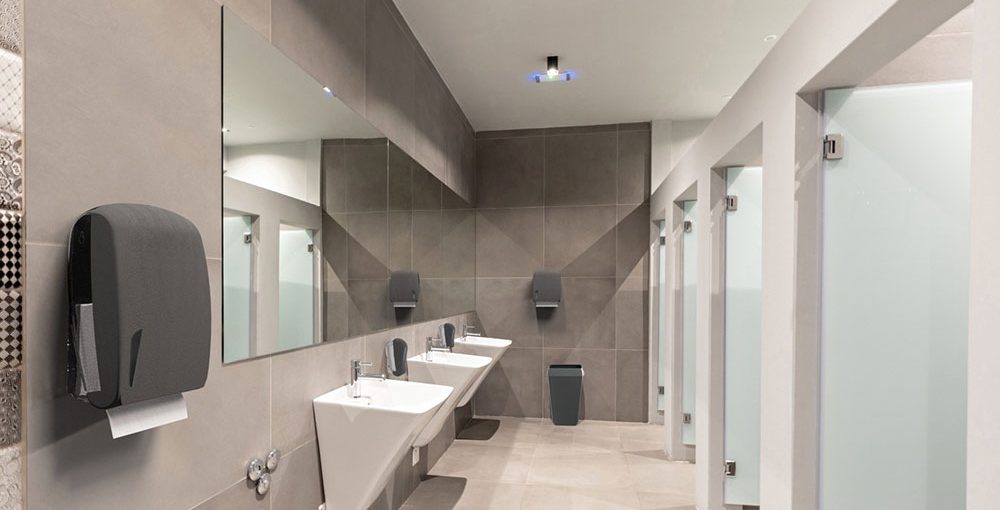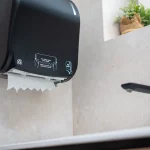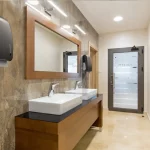Dispensers in commercial buildings – In commercial buildings, dispensers are touchpoints—places where users encounter either your attention to detail or the lack of it.
A sleek interior, a spotless reception area, modern furniture… and then, a dispenser from another era. Yellowed plastic, an outdated manufacturer logo, and a mechanism that jams.
The moment a user goes to wash their hands, they come face-to-face with reality. And that’s where the difference is made—between an average and a thoughtfully designed space.
Today, dispensers in commercial buildings are far more than a required accessory. They are part of the image your company projects. They become a visual and functional element of your brand identity, an everyday part of the user experience, and often an unconscious yet powerful signal of your level of professionalism.
Related topic:
Povezane teme: Tissue paper products: Discover How to Turn Them Into a Competitive Advantage
Find out why companies are switching to foldable paper towels and contact us for a recommendation: +381 66 811 83 82
Dispensers in commercial buildings – Where is the line between functionality and experience?
From industrial halls and office buildings to retail chains and clinics, every company today needs a clearly defined hygiene system. But few take the time to ask: how do dispensers in commercial buildings affect day-to-day operations?
Because not all users are the same.
Employees, clients, guests, partners, patients—they all receive a message about your standards through the dispenser. If the paper jams, if the soap drips, if there’s no liquid available—these small issues become a lasting part of their experience. And user experience isn’t shaped only by big things, but by these small, repeated interactions.
A high-quality dispenser offers:
- Precise dosing (less waste)
- Easy refilling (less burden on staff)
- Modern appearance (blends with interior)
- Monitoring capability (visible fill level)
- Reliability (fewer malfunctions)
- Efficiency (faster service, better flow)
When you add it all up, you realize the dispenser is one of the most frequently used elements in the entire building—and it needs to work flawlessly.
Moreover, the right dispenser also impacts:
- Service continuity, especially in high-traffic areas
- Waste reduction and cost control through smart dispensing
- Company reputation, as users form opinions based on everyday contact
Related topic: Paper towel dispensers – A small detail that changes the entire impression
Explore models that save and impress. Call us at +381 66 811 83 82
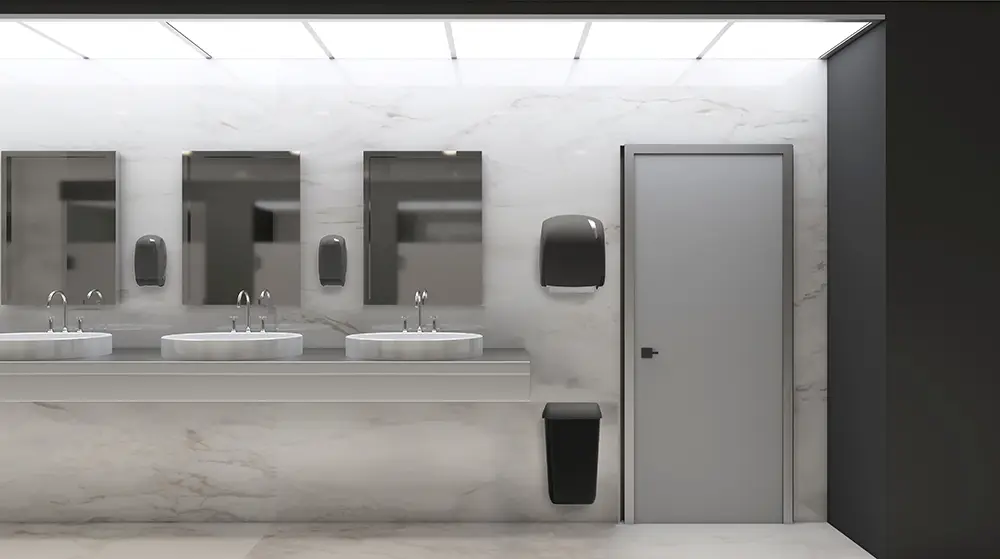
Dispensers in commercial buildings are a central part of the hygiene system
When they work well, they go unnoticed. But when they malfunction, everyone notices.
That’s the paradox of hygiene standards—the best kind is the one that’s invisibly good. And that level of quality is achieved through a system.
A system means:
- Uniform models throughout the facility (standardization)
- Refill availability (logistics)
- Staff training (proper use)
- Visual consistency (user perception)
- Long-term procurement plan (budget stability)
- Consumption monitoring (cost optimization)
Add to that: easy maintenance, high usage frequency, effortless refilling, and mechanisms that prevent paper jams or soap drips—and you have a system that saves both time and resources.
Facilities with a long-term mindset know that hygiene systems are not expendable accessories—they are part of the infrastructure. Just like heating, lighting, and ventilation, dispensers belong in the realm of strategic planning.
Modular dispenser systems allow for different configurations based on spatial needs—from small restroom stalls to high-traffic areas like halls and waiting rooms. When the system works, it not only saves money but also makes daily operations easier for the staff.
From an aesthetic standpoint, high-quality dispensers today follow the lines of the interior. They no longer look like technical add-ons to be hidden—they become an extension of the space’s design. Available in various colors, materials, and finishes—from matte plastics to wood-toned variants—they fit seamlessly into sophisticated interior concepts.
Our offer includes the following collections:
Blanc – Pure white for bright and minimalist spaces.
Ramel – Soft beige tones for warm and neutral interiors.
Nero – Deep black for strong contrasts and a modern identity.
Rock – Stone texture for sophisticated authenticity.
Each collection is carefully designed so the dispenser becomes part of your facility’s visual narrative—not a hidden element, but a consciously displayed detail.
An increasing number of models come with smart features—fill-level sensors, lockable options, wireless refill notifications. In large systems, this means resource optimization, more efficient organization, and a better user experience.
Related topic: Why are Z-fold paper towels the choice of establishments that know what they’re doing?
Looking for a system that runs smoothly, looks professional, and saves resources? Contact us for a recommendation tailored to your space and workflow: +381 66 811 83 82.
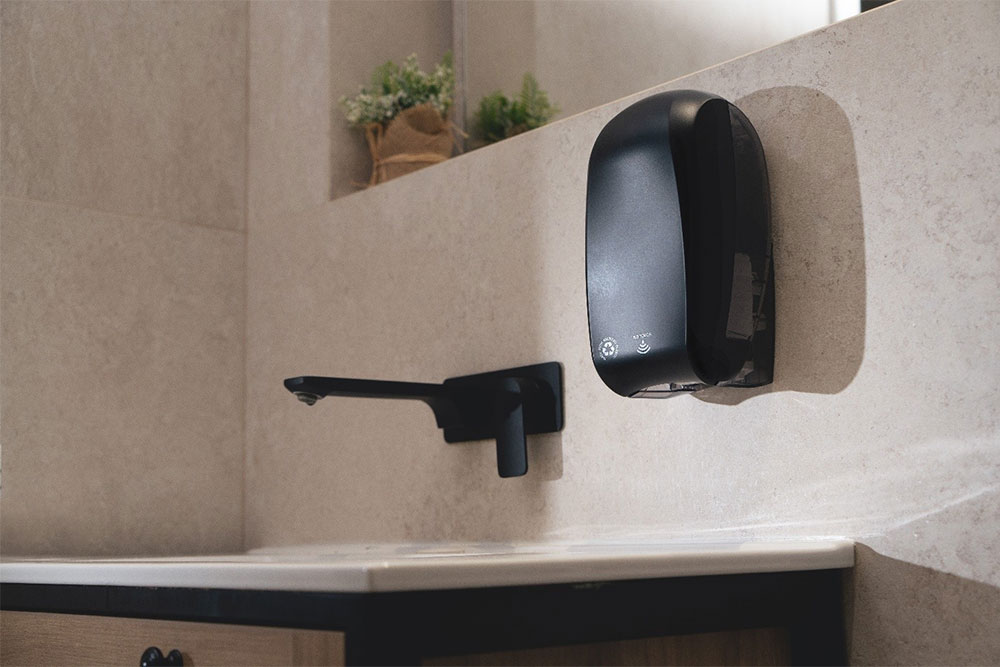
How to choose the ideal dispenser for a commercial facility – A practical 5-step guide
-
Map the User Flow in Your Facility
- Create a simple layout map (restrooms, kitchens, waiting areas).
- Note the average number of users during peak and off-peak hours.
- Distinguish between internal users (employees) and external ones (clients, patients, visitors).
- Result: You’ll clearly see where high-capacity models are needed, and where compact solutions will suffice
-
Calculate Actual Material Consumption
- Take three typical days and count used rolls/packs.
- Divide the quantity by the number of users—you’ll get sheets/portions per person.
- Compare with manufacturer specifications; if the difference exceeds 25%, the paper/dispenser match is off.
-
Define the Priority: Aesthetics vs. Automation
- Client-facing zones (receptions, VIP restrooms): focus on design (Blanc, Nero, Rock collections).
- Production halls, schools: focus on durability and low-maintenance—sensor-based or mechanical models.
-
Check Compatibility with Your Existing Logistics
- Does your supplier regularly stock the refills (rolls, cartridges)?
- What’s the minimum delivery time?
- How much space do pallets take up—can your storage handle it?
- Avoid dispensers that require “exotic” formats unless you have a reliable supply chain.
-
Include Your Maintenance Team in the Training
- Organize a quick demo session (open, refill, lock).
- Check how many tools are needed (ideally none).
- Measure the time it takes to refill—target is under 30 seconds per unit.
- When the staff supports the solution, it reduces the risk of rejection or improvisation later.
Once you go through these five steps—mapping user flow, calculating actual consumption, defining design and automation priorities, checking logistics, and involving your maintenance team—you’ll get a clear, data-backed answer to which dispenser truly works for your facility.
The result isn’t just a better-looking restroom, but lower long-term costs, fewer service interruptions, and a reliable user experience that’s consistent day after day.
Related topic: Paper products, prices, and modern Italian dispensers in hospitality
Ready to turn these steps into a tailored proposal for your space? Call us at +381 66 811 83 82 or send us a message.
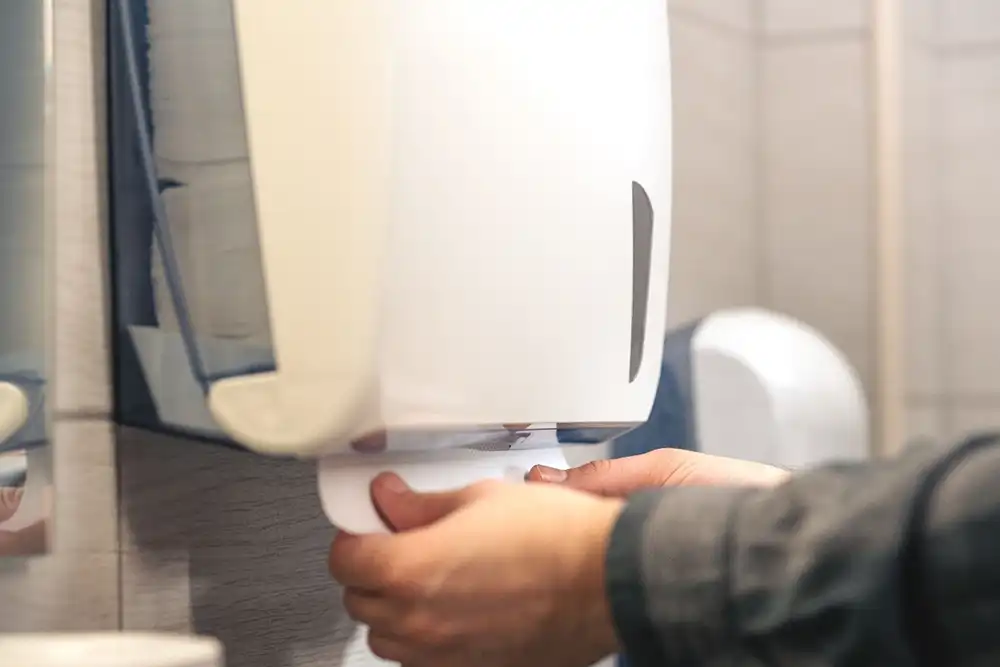
Dispensers in commercial buildings – A small detail that says it all
Dispensers in commercial buildings are a detail. But a detail the user interacts with every single day. Either everything works perfectly, or they end up fiddling, waiting, wiping excess, calling staff…
If you care about the impression you leave, dispensers are part of that impression. When cost control matters, dispensers are part of that cost. If you care about professionalism, dispensers are part of the system.
And more importantly, dispensers are the point where the user, the brand, and everyday life meet. In a space that strives for efficiency, cleanliness, and reputation, they are an extension of your value system.
So choose them thoughtfully. As part of the brand. Part of the system. As part of the experience.
If you’d like more useful tips on optimizing space, cost, and user experience, sign up for the LUU newsletter.
We don’t send often, but when we do—it matters.
Subscribe !

